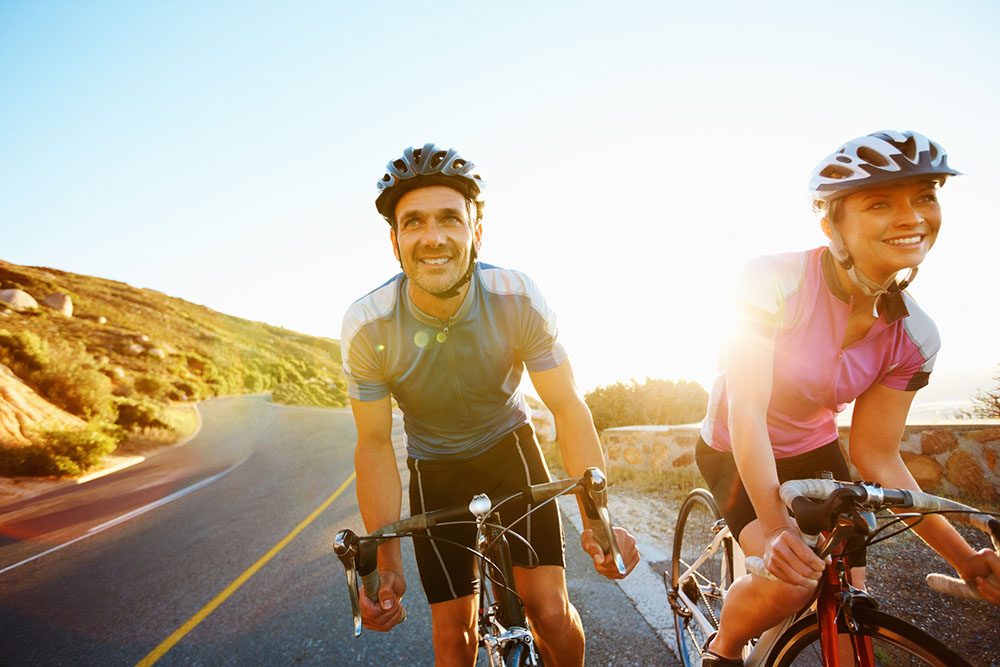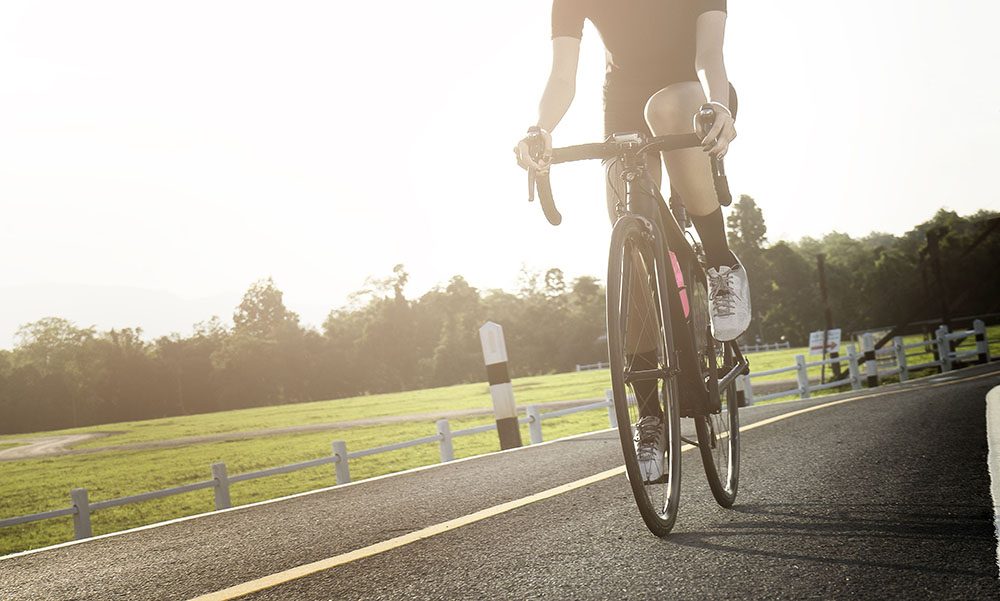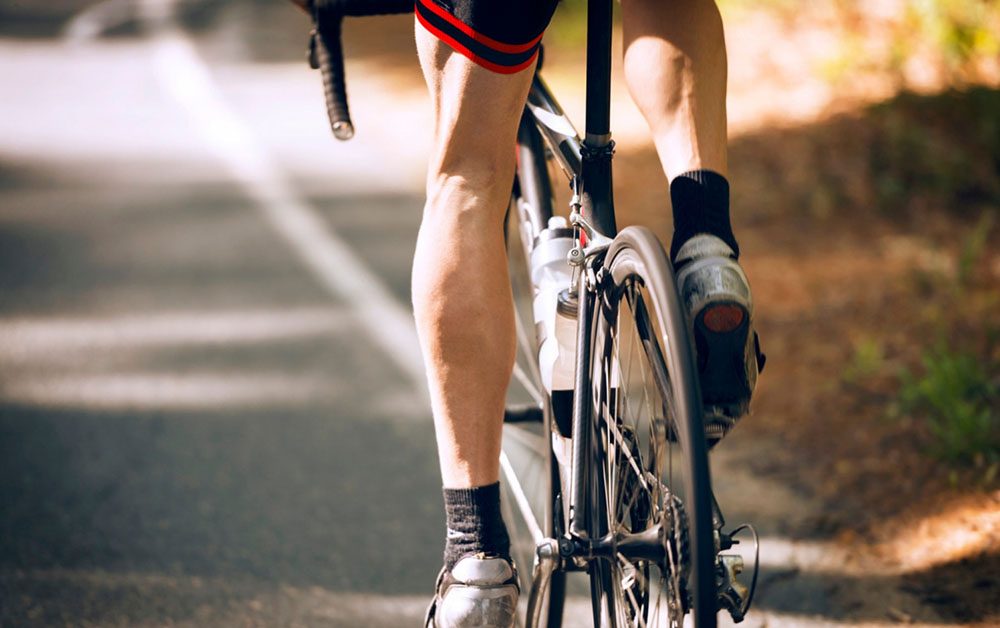Top 13 Cycling Technique Tips to Improve Cycling Efficiency

Although pedaling cycling technique is the most common area of concern when trying to improve cycling efficiency, other aspects of technique (such as shifting gears at the right time and your position on the bike) can also make a big difference.
Whether you are looking for free speed in your next bike race or just want to stay with a faster training partner, you can use these 13 cycling technique tips to improve your cycling efficiency
1 Adjust your saddle to improve comfort
The correct saddle height is important for pedaling efficiency and comfort, but the angle of the saddle is also important-this is often overlooked. The nose of the saddle should be flat or point slightly upward to prevent you from sliding too far forward. This will also support your sitting bones in the correct part of the saddle and reduce the weight of your more sensitive areas. Putting most of your weight on your sitting bones can also reduce some of the weight on your hands and reduce the pressure on your shoulders and neck. These fine adjustments can have a big impact on long-distance comfort-the more comfortable you are, the higher the efficiency.
2 Relax your upper body
Muscle tension will eventually cause soreness, and when you feel uncomfortable on the bike, you will eventually slow down. Although some of them can be corrected by adjusting your position, it is also helpful to learn how to stay relaxed on the bike. Relaxing your hands, elbows, and shoulders by reducing the grip on the handlebars can improve the handling of your bike and reduce the possibility of overcorrection.
3 Move to simpler equipment before you need it
Changing gears at the right time is a cycling skill that takes time to master. One of the biggest mistakes new cyclists make is to wait too long when approaching the climb before changing to an easier gear. If you wait to change gears while climbing a hill, the chain will bear the load. This will cause unnecessary grinding and may cause your chain to fall off or become unable to move. In order to maintain faster speed and forward momentum, please change gears as soon as possible before the road starts to move up.
4 Long and slow
If you want to ride farther and faster, you need to ride at a slower speed. Although this does not mean that you should not do interval training once or twice a week, you will want to avoid cycling in these intermediate training areas most of the time. Instead, focus on long, slow cycling to improve your endurance while preventing stress on your muscles and tendons. You can also use these slower rides to adjust your tempo and generate momentum at dead ends of pedal travel.

5 Use different hand positions
Most cyclists use one hand position more than others. Although it is fine as long as you feel comfortable, it is usually recommended to change the position of your hands frequently. This prevents stiffness in the back and neck and helps you generate more strength in certain situations. You should use the top of the pole when climbing to open your lungs and lean on the saddle. Use the roof when standing and cycling on flat roads and undulating hills, when you want to get more aerodynamic positions.
6 Experiments with various rhythms
The typical cycling cadence is in the range of 80-100 revolutions per minute (rpm). The pace at which you ride depends on the way you feel most natural, but you should also consider the most effective way. If you get tired easily during long-distance climbing or cannot maintain a reasonable speed during long-distance cycling, then trying different cadences can help you increase your efficiency. If you are naturally on the low end, try a higher cadence (in the range of 90-100 rpm) to see if you can maintain a higher power output. With a little practice, this change may eventually help your performance.
7 Consider your aerodynamics
Since cycling a bike primarily fights the wind, improving aerodynamics will make you more efficient. Spending more time cycling in the water droplets, wearing better-fitting jerseys, and using aerodynamic equipment such as helmets and wheelsets are all ways you can resist the wind more effectively.
8 Practice step aerobics
Although the push phase of the pedal stroke (12 o’clock to 5 o’clock) is where you generate most of your power, learning to spin in circles and squeeze more watts from these dead ends can make you faster and more efficient. Single-leg exercises and high rhythm intervals are some ways to improve weakness and become more fluid when rotating the pedals. Follow this guide to get started.
9 Maintain optimal nutrition/hydration
For cycling that lasts more than two hours, you need to maintain adequate nutrition and water to maintain energy levels. This means drinking at least one bottle per hour, and at least one bottle of energy bar or gel every hour after the first hour. For hot weather or long-distance cycling, electrolyte drinks can also be used. It is also a good practice to eat solid foods in the early stages of cycling, and to save energy gels when the strength increases in the final stages of climbing or cycling, because they are easier to digest and less likely to cause gastrointestinal discomfort.

10 Cycling with a backpack
Improving your posture and investing in more aerodynamic equipment can definitely help you keep out the wind more effectively. However, if you want to take things to the next level, stay behind other cyclists as much as possible. Compared to cycling alone or in the front of the backpack, cycling behind another cyclist requires 30-40% less energy.
Although it is not recommended not to annoy your training partner by having your turn to ride a horse in the front, sitting behind other people can help you go far and faster than alone. In the race, sit in the group for as long as possible, even if it is slower than you think you can ride. Choosing to accelerate before the team requires a lot of energy to maintain, and you are more suitable to wait until the later stage, when you are sure that you can reach the finish line through a single effort.
11 Cycling skills
Choose the gear ratio that suits your strength, and don’t step on the gear ratio that you can’t step on. Quickly switch to a lower gear ratio, maintain a uniform and powerful cadence, avoid pedaling at a fast and slow time, and control the cadence within the range that suits you. For example, the cadence of novices can be maintained at around 80-90. Experience Abundant riders can control the cadence around 100-110.
12 Cycling in different road conditions
Adjust the gear ratio at any time according to the road conditions. For example, you can appropriately reduce the gear ratio for upwind and uphill to make pedaling easier, and increase the gear ratio appropriately for downhill or downwind to make pedaling more efficient. In a word, still keep the cadence.
13 don’t go to the high speed
Don’t care about the maximum speed that bursts out instantly. Maintaining a high speed for a few seconds can’t increase the efficiency much. Only by maintaining the best condition for a longer time can the average speed be increased. Average speed is king.
A bike is a kind of exercise tool that uses legs to exert force. It relies on people’s legs to step on the pedals and drive the rear wheel to rotate through the chain to make the bike move forward. The transmission system represented by the chainring and the rear flywheel, It is quite important, but cycling a bike does not only use gear ratios. The gear ratios usually need to be matched with the pedaling frequency of both feet to achieve complementary effects.
How to make your pedaling more efficient every time?
Don’t think that you can get the best pedaling effect as long as you step on it hard.
Pedaling habit
Just step on it! Many people think that in order to speed up the cadence during cycling, the rear foot must be lifted with the help of the lock shoe when the front foot is stepped down. But in fact, instead of improving efficiency, this approach makes you more tired and slows down your speed. Even if you’re cycling a dead fly, you don’t need to lift the back foot to increase power.
So, after giving up the lifting action, when is the most effective forefoot force? From 10 o’clock to 1 o’clock, start pressing forcefully, until the 3 o’clock direction can get the maximum pedaling power. In addition, keeping the feet and calves at a fixed angle as much as possible during the stepping process is also an efficient stepping habit.
Strength Training
Your hip strength, thigh strength, and waist and abdomen strength are the keys to determining cadence. Therefore, after correcting the pedaling habit, appropriate various strength training (squats) to improve the strength of the key muscles.
If you are interested in our electric bikes or electric scooter, you can leave a message. If you have any query please feel free to contact us. We are looking forward to your arrival.
 Shuangye ebike
Shuangye ebike
